
first response
‘Casablanca’ is a romantic tragedy which over time got the title of “one of the greatest love stories ever made”. The film is set in 1942 and follows the story of the main character Richard (Rick) and Ilsa who is the love interest. I have decided to give this film a rating of 7/10 due to the fact that I enjoyed the storyline and plot of the movie as well as the romance. This is because of the ‘invisible editing’ and clear storytelling through the shot sequences and amazing acting but I also enjoyed the humour throughout the film. However, I would have probably enjoyed it more if it was filmed in colour instead of black and white.
memorable scene
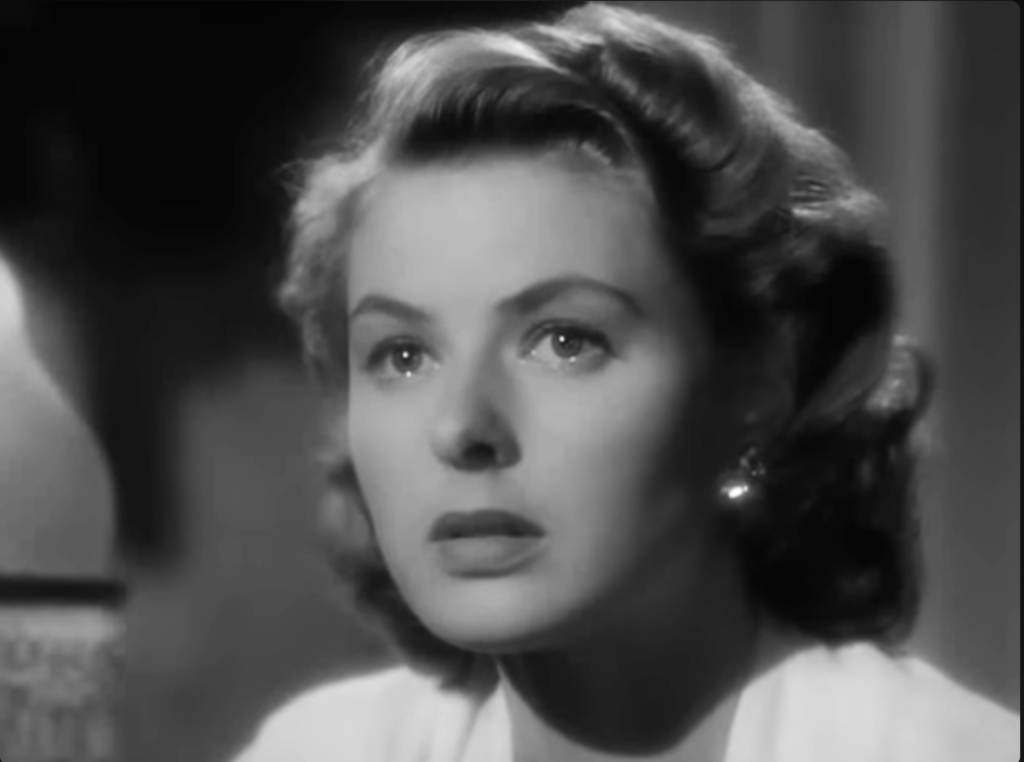
In my opinion, the most memorable scene was when Rick and Ilsa see each other for the first time again at Rick’s after Ilsa left him in Paris. This is because I feel like it was a very powerful and emotional scene and though this film is shot in black and white, the scene is lit very well compared to the rest of the film being very dark and shadowy. The performance from both protagonists was also great and not too over the top in this scene which just amplified the experience of watching it.
key actors
Humphrey Bogart

Humphrey Bogart was a famous American actor who is now known as a cultural icon from the golden age of Hollywood. He was born on the 25th of December 1899 and passed away on the 14th of January 1957. Bogart began acting in Broadway shows, debuting in ‘The Dancing Town’ (1927), he often appeared in roles portraying gangsters which made him recognisable as “tough without a gun” referring to him mostly playing the roles of “bad guys”. He also made a protagonist appearance in ‘The Petrified Forest’ in 1936 as well as being praised for his role in the gangster drama ‘Dead End’ in 1937 and many more before landing his most famous role as Rick in ‘Casablanca’ (1942) which even led him to win an Oscar for his performance. Bogart was not originally meant to play the role of Rick however the producers of the film fought for him to play this role as they thought he was perfectly made to play Rick. During his acting career of about 30 years, Bogart appeared in more than 75 feature films as he was signed with the Warner Bros. for the majority of his career. Bogart was not always seen as a fit for the role of Rick as he did not usually play romantic characters however, due to his screen presence, charisma and good looks and also Micheal Curtiz’s admiration, he got the role.
Ingrid Bergman
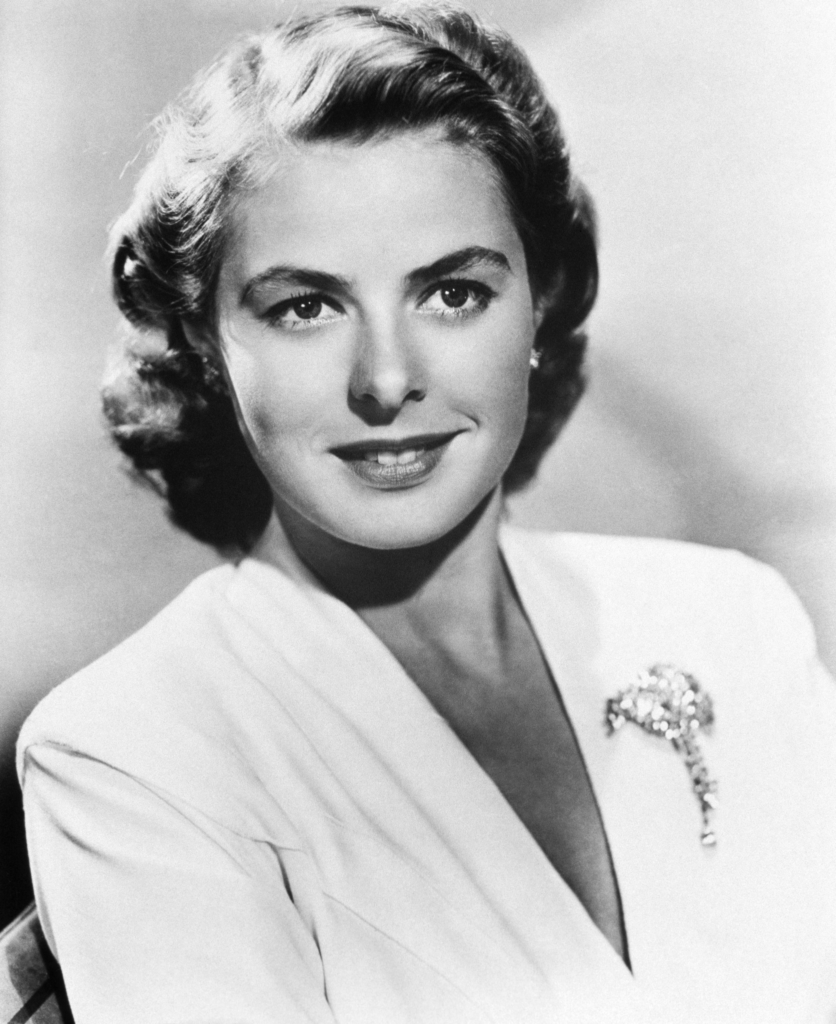
Ingrid Bergman was a Swedish actress who’s career lasted over five decades, she was well respected and loved in the film industry due to her kindness, talent and as many would say, captivating looks leading her to get the title of one of the most influential screen figures. She was born in Sweden on the 29th of August 1915 and died on her birthday in 1982. Ingrid began her acting career by starring in numerous Swedish and German films before making an appearance in her first English re-make of the film ‘Intermezzo’ which then led her to land the infamous role of Ilsa in ‘Casablanca’ at just 26 years old. During her lengthy career, she went on to win 3 Academy Awards, 2 Emmy Awards, a Tony Award and many more due to her immensely successful career. The writers of ‘Casablanca’ wanted to cast a young, beautiful and most importantly foreign actress due to them wanting to make the role of Ilsa as realistic and authentic as possible, her accent was considered a huge bonus.
Paul Henreid
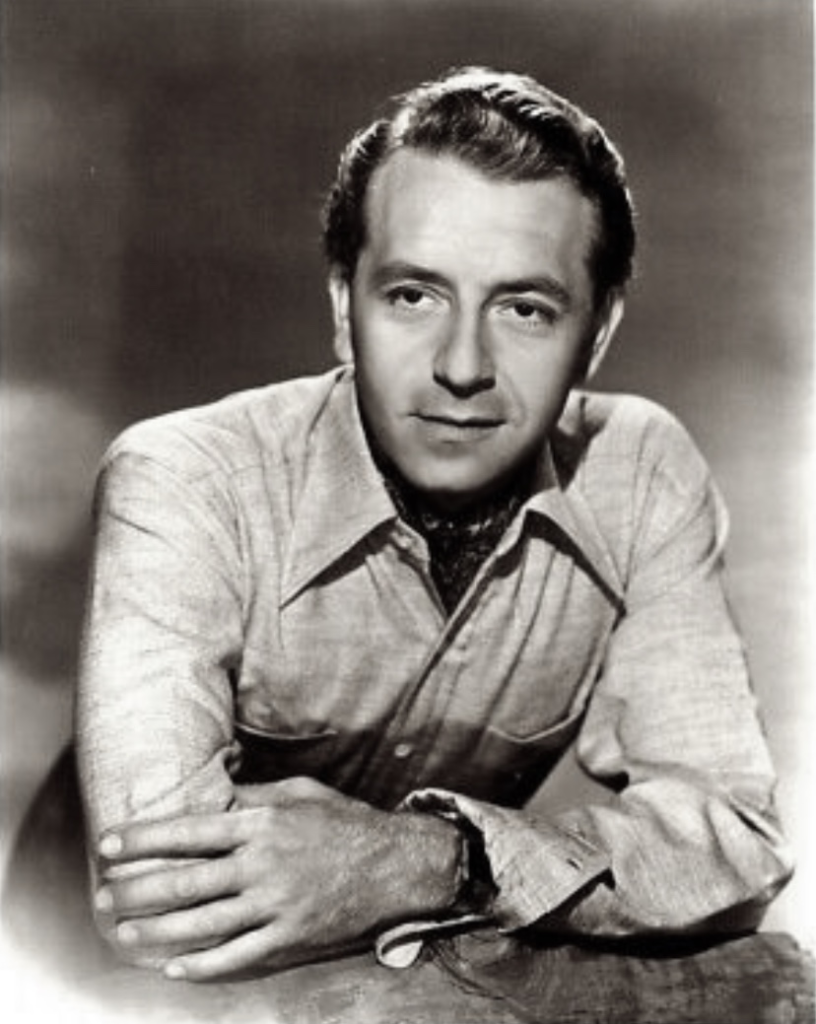
Paul Henreid is best remebered for his various roles in films during the 2nd World War such as Karl in the war drama film ‘Night Train to Munich’ (1940), Jerry Durrance in ‘Now, Voyager’ (1942) and infamously his role of Victor Laszlo in ‘Casablanca’. He was born on January 10th, 1908 and passed away on the 29th of March 1992 in a small town in what was known back then as part of the Austro-Hungarian Empire where he first started acting. He then went on to be a successful actor, director, writer and producer, also known to have worked alongside the Warner Bros. during the golden era of old Hollywood. In his role as Victor Laszlo in ‘Casablanca’, Paul was praised for his heroic and inspirational image on screen as one of the main protagonists in the film portraying a leader of the resistance fighting against Nazis. He was also perfect for the role due to his professionalism and dedication to all his roles, giving his best performance for the camera.
Claude Rains
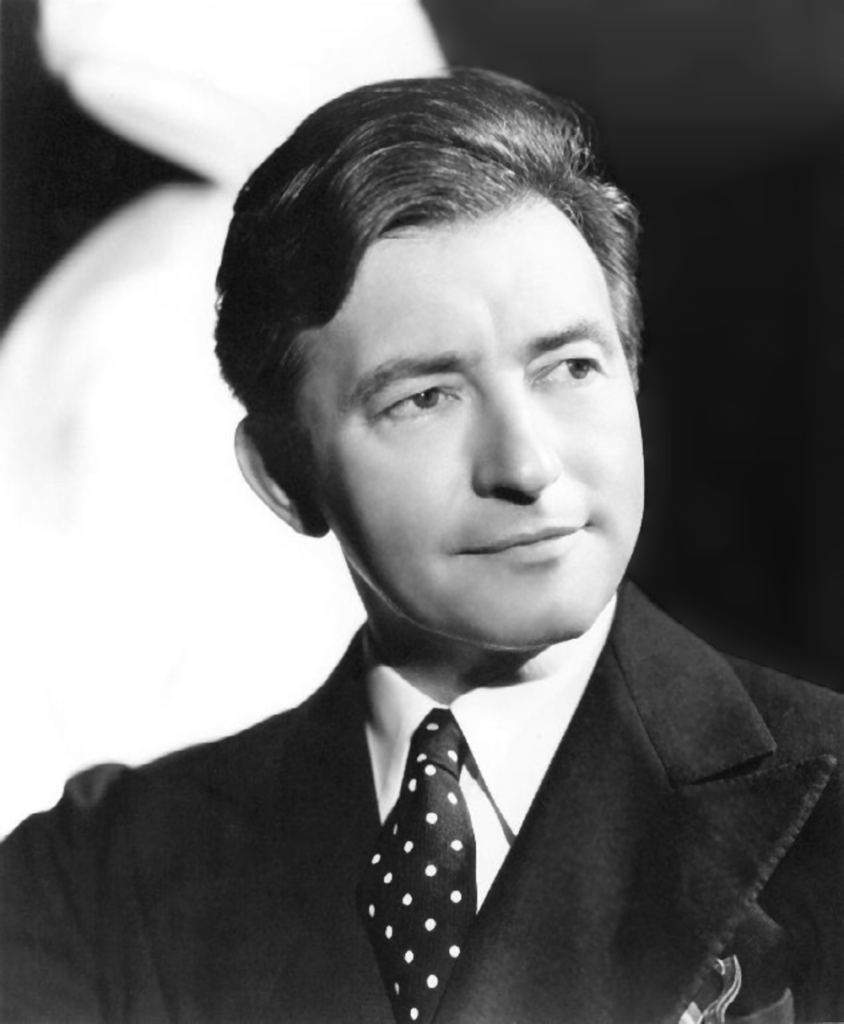
After his American film debut as the character Dr. Jack Griffin in the horror film ‘The Invisible Man’ (1933), William Claude Rains went on to have an acting career which spanned for a total of 7 decades. He was born on the 10th of November 1889 and passed away on May 30th, 1967. He was a British American actor who starred in numerous films such as ‘The Adventures of Robin Hood’ (1938), the iconic horror film ‘The Wolf Man’ (1941), the religious film ‘The Greatest Story Ever Told’ (1941) and many more including his famous role as Capitan Louis Renault in ‘Casablanca’. Claude signed a long-term contract with Warner Bros. in November of 1935 where he was able to be loaned around to other studios during this time. Rains was a highly versatile actor, capable of playing a wide range of characters due to his ability to portray both charm and cunning, further landing him his role in ‘Casablanca’. Despite of not being the lead role, Claude had a commanding screen presence. His scenes with Bogart were ones of the most memorable and his ability to portray authority with his character as well as being able to deliver humorous lines without them feeling forced.
Conrad Veidt

Veidt who was born on January 22nd 1893 and sadly passed away on April 3rd 1943. He attracted the attention of directors very early into the world of cinema, landing his first major role in the silent German Melodramatic film ‘Different From The Others’ (1919), the silent horror film ‘The Cabinet of Dr. Caligari’ (1920) and also one of his most famous role in the romantic drama ‘The Man Who Laughs’ (1928) before landing his role of the German Major Strasser in ‘Casablanca’. After a widely successful career in German silent films when he became one of the highest paid actors during that time, him and his Jewish wife had to leave Germany in 1933 when the Nazis came to power. The couple settled in England for a few years before moving to America where he was signed with the Warner Bros. Despite his bubbly and kind personality in real life, Conrad was casted to play one of the antagonists in the movie. His role as a corrupt Nazi who wasn’t completely loyal to the Germans was presented as stern and spiteful however played really well.
Sydney Greenstreet
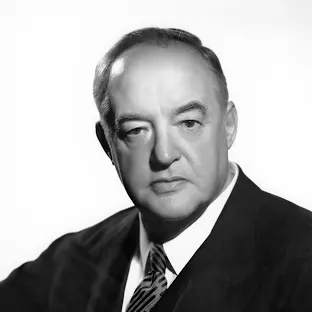
Greenstreet was a British and American actor who was born on the 27th of December 1879 and passed away on January 18th 1954. He is well-known from three of the most famous Warner Bros. films during the 1940s, the American film noir ‘The Maltese Falcon’ (1941), The American war film ‘Passage to Marseille’ (1944) and of course ‘Casablanca’. Though he did not start his acting career until the age of 61, he debuted his stage appearance as a murderer in the 1902 production of Sherlock Holmes. He continued acting in plays then went on to produce some himself which led him to become well known and well respected in the film industry due to his range of skills and talent. In 1949, Greenstreet switched the focus of his career to the radio drama series ‘The New Adventures of Nero Wolfe’ which ended in 1951 as well as his acting career.
Peter Lorre
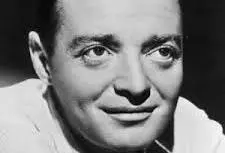
Peter was a well-known Hungarian and American character actor who was born on June 26th 1904 and died on the 23rd of March 1964. He first started his acting career in Europe then moved to America where he got signed with the Warner Bros. studios in the 1930s. Known for his timidly devious characters, his appearance, and accented voice, he was frequently typecast as a sinister foreigner which was no different from his role of Ugarte in ‘Casablanca’. He has been caricatured throughout his life and his cultural legacy remains in media today. He began his stage career in Vienna, in the Austro-Hungarian Empire, before moving to Germany where he worked first on the stage, then in film in Berlin during the late 1920s and early 1930s. Lorre, who was Jewish, left Germany after Adolf Hitler and the Nazi Party came to power. Lorre caused an international sensation in the Weimar Republic era film M (1931) where he portrayed a serial killer who preys on little girls. His second English-language film was Alfred Hitchcock’s ‘The Man Who Knew Too Much’ (1934), made in the United Kingdom.
S.Z. Sakall
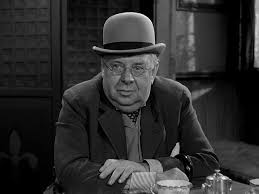
Sakall (1883-1955) was a well known stage and film Hungarian American actor who has appeared in many prominent films such as ‘Casablanca’ in which he played the head waiter in Rick’s bar. He has also appeared in the romantic comedy ‘Christmas is Connecticut’ (1945), in the musical romantic comedy ‘In The Good Old Summertime’ (1949) and the musical ‘Lullaby on Broadway’ (1951). Sakall played numerous roles in the classic style of Hollywood productions hence why becoming a well respected and loved part of the film industry due to his talent, dedication and lengthy career. He also earned a reputation as one of the “stalwart character-acting veterans” of his day, particularly after being given his loyal and significant role in Casablanca.
Madaleine Lebeau
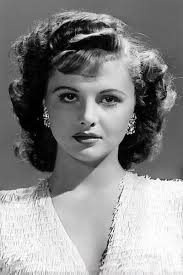
Though Madaleine (1923-2016) did not get casted for one of the main roles in ‘Casablanca’, however she possessed an acting career spanning numerous decades starring in films such as her first one being the melodrama ‘Young Girls In Trouble’ in 1939, the British drama film ‘Cage Of Gold’ (1950) and many more successful and recognisable films from which she gained talent and fame as she was seen as a beautiful and talented actress often compared to Ingrid Bergman despite their completely different levelled roles in ‘Casablanca’.
Dooley Wilson
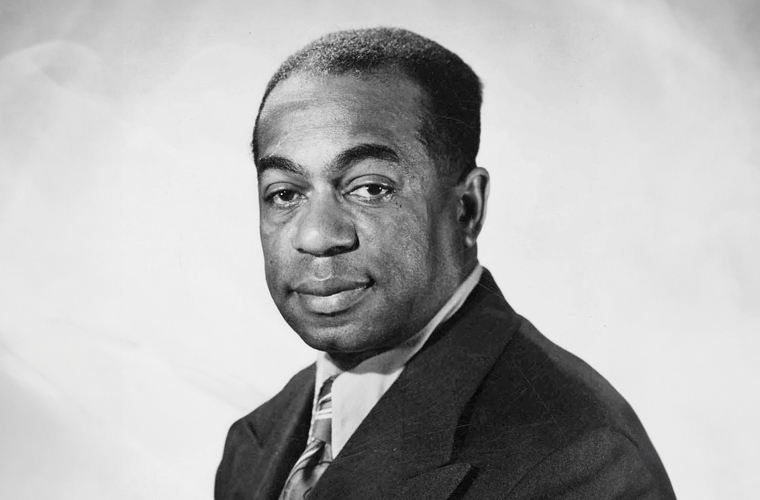
Arthur “Dooley” Wilson (1886-1953), was an American actor, singer and well known musician who is best known for his character of Sam in ‘Casablanca’. Wilson was a drummer and singer who led his own band through the 1920s, touring mostly nightclubs in London and Paris getting many people’s admiration due to his immense talent. He began acting in the 1930s being casted for supporting roles on Broadway and a series of films such as the American comedy “My Favourite Blonde” (1942), the Western “Passage West” (1951) and many more. Wilson was borrowed by the Warner Bros from Paramount Studios in 1942 when the casting for ‘Casablanca’ began for 7 weeks at $500 a week.
Joy Page
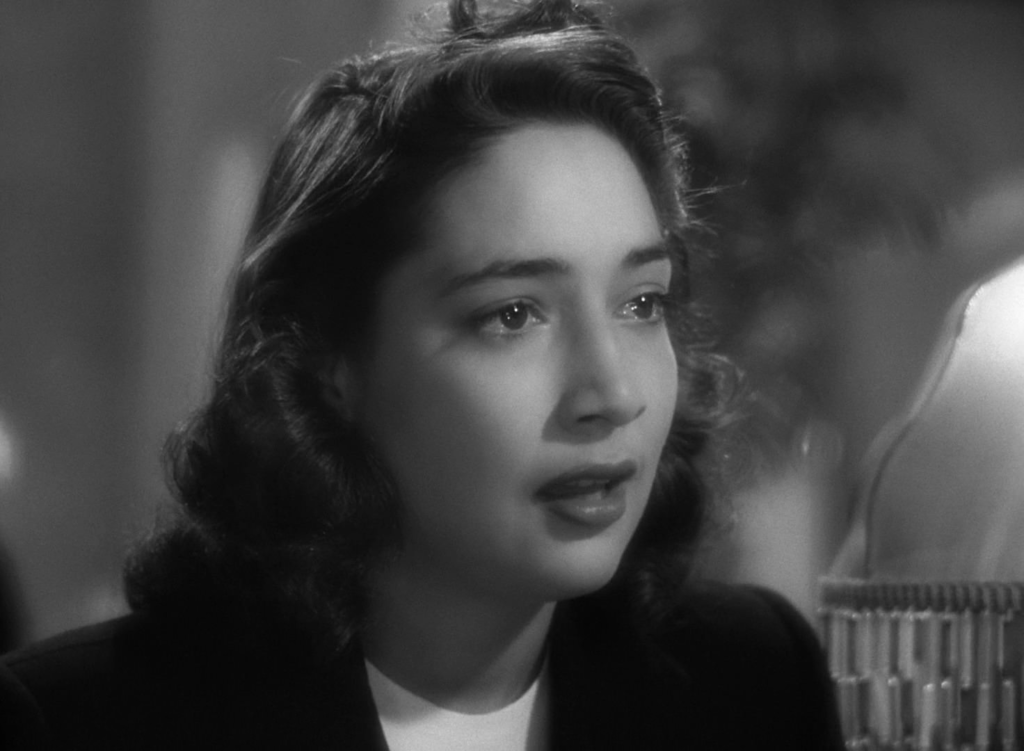
Joy was born on November 9th 1924 and died on April 18th 2008. She was an American actress who is best known as her role of the Bulgarian refugee Annina (she was also sometimes credited as Joanne Page). In 1936, Joy’s mother married Jack L. Warner who was then head of the Warner Bros. Studios however despite this, he did not encourage his stepdaughter’s interest in acting. She was only 17 when she landed her role in ‘Casablanca’ without the help of approval of her stepfather therefore he refused to sign her to a contract and she never appeared in another Warner Bros. film after that. She went on to work for various other studios and even began regularly working for Disney later on in her career.
John Qualen
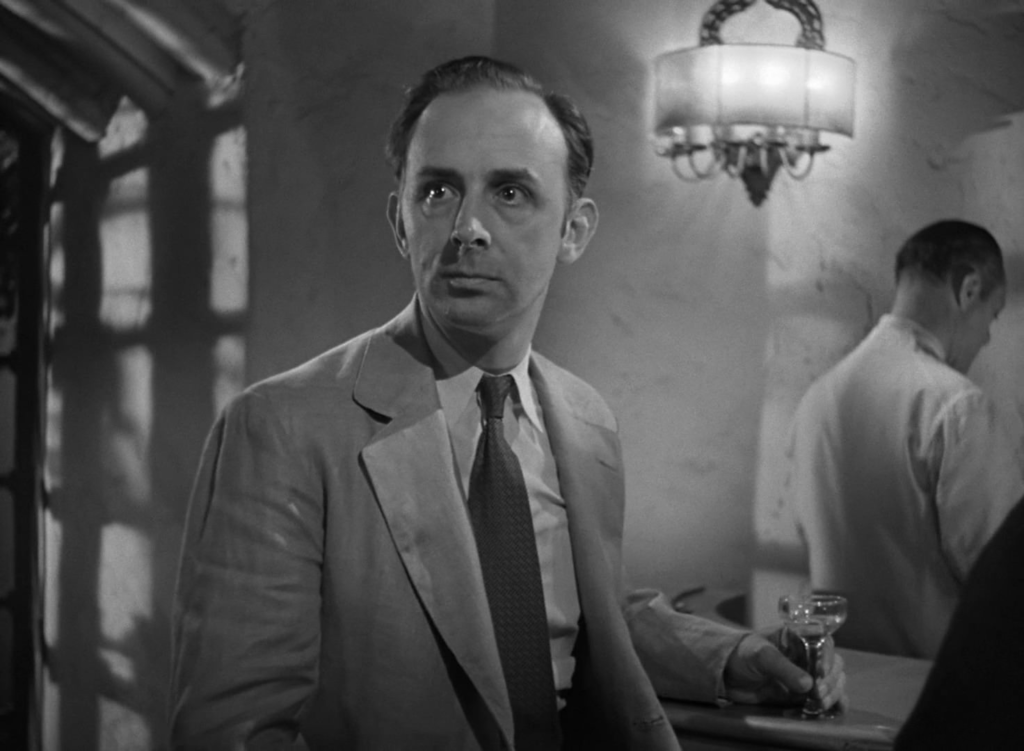
John (1899-1987) was an American character actor with Norwegian heritage who specialised and was well known for playing Scandinavian roles. He has starred in films such as the American drama “The Grapes Of Wrath” (1940), The American comedy “His Girl Friday” (1940) and of course his role in ‘Casablanca’. Qualen was also a flautist, having begun to play at only 8 years old, he continued studying music and even went on to play for an orchestra further into his career. He has also starred in a lot of films such as the drama “Street Scene” (1931), the American comedy film “Sing And Like It” (1934) and many more before ‘Casablanca’ and though he did not land a very relevant or memorable role, he did get signed with the Warner Bros.
Michael Curtiz (director)

Curtiz (1886-1962) was known as one of the greatest and most respected directors of all time. Producing over 170 films for Warner Bros. alone, he specialised in the film art known as ‘Film ‘Noir’ which is a style of film focusing on the high and low contrast (filmed mostly in black and white), enhancing shadows and creating a mysterious feel for the films. He was very passionate and caring about all his work, making him admirable and highly successful in the film industry.
Hal B. Wallis (producer)
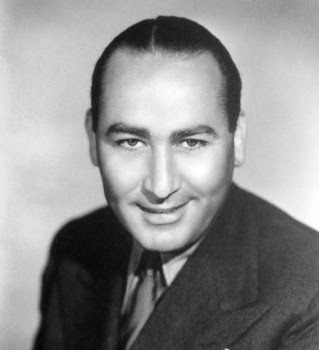
Harold (Hal) B. Wllis
Wallis (1898-1986) was an American film producer who is well known for producing ‘Casablanca’ and many other popular films during the ‘Classic Hollywood’ era such as the American Film Noir “The Maltese Falcon’ (1941), the American melodrama ‘Dark Victory’ (1939) and many more which made his work become recognisable and respected. Hal is also the one who specifically requested Humphrey Bogart for the role of Rick because he thought that he would be the perfect fit for the role.
mise-en-scene
- location – as much as ‘Casablanca’ seems like an exotic and tropical place portrayed by the film, it was actually all filmed on a sound stage with an artificial built set within the premises of the Warner Bros. studios in Hollywood, other than the end scene at the airport which was filmed at a local airport in Los Angeles.
- interior sets – every single set was built after a lot of research about the actual place Casablanca in order to give a very authentic and realistic feel to the film. As lighting was a huge part of filming ‘Casablanca’ and how the final product would look, every piece of set design was purposeful in order to work with the lighting, creating pretty and visually interesting patterns in the form of shadows on character’s faces or on the walls enhancing the ‘Film Noir’ style of film.
- props – props in the film such as the roulette table and cigarettes are very important as all these things get a close-up of them meaning that they hold some sort of symbolism but also to show their importance in a specific scene or throughout the entire film or even just relating to one specific character.
- costumes – most characters in the film are meant to be refugees however, regardless of this, everyone in the film was well dressed and everyone followed their own colour scheme. For example Ilsa, her dresses were simplistic but elegant therefore emphasizing her youth and liberty but also her wearing a hat in most scenes also became iconic overtime due to it looking sophisticated and powerful. Another example would have to be Rick’s character who is usually seen in a black or white, well-tailored and expensive looking suits to show his power and authority.
editing
Even though Casablanca is an older film, the editing was seen as impeccable and even to this day, this movie gets a lot of recognition for its “invisible editing” meaning that the cuts throughout the film is done intentionally in order to not be noticed in any way. This is because when watching the film, the audience is meant to be amerced fully into the world of the film. The editing also allows the spectator to find out crucial information about he characters. For example, in the roulette wheel scene when Rick is helping the young man win the game in order to get enough money for him and his wife to get a visa and leave Casablanca, the editing throughout the scene was rapid and the camera did not only focus on the characters talking but it also cuts to symbolic features such as the wheel and the chips and the number 22 also having a significant appearance. This scene conveys suspense and interest but it also shows the spectator that Rick is not as heartless as he gets introduced to us at the beginning enhancing his character development.
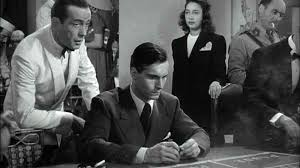
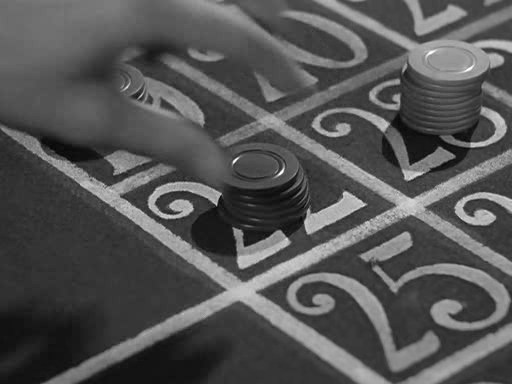
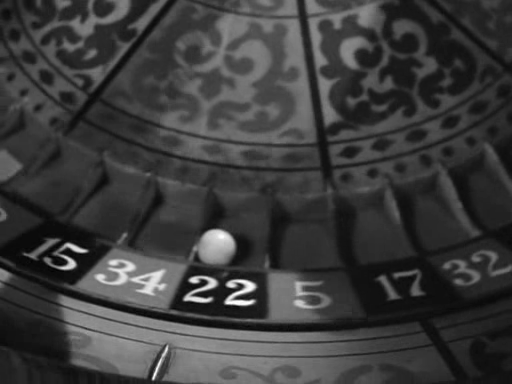
sound
Though Casablanca was filmed not long after synchronised sound started appearing in films, the dialogue between the actors can be heard very clearly therefore allowing the spectator to almost feel the character’s emotions through their voice. There was also no Foley sound meaning everything we heard was organic and came only from filming other than the synchronised music in some scenes though in a lot of them we had the character Sam playing the piano live while filming.
As well as other old songs played in the film, the song ‘As Time Goes By’ written by Herman Hupfeld but composed by Max Steiner is an iconic slow romantic jazz song which becomes the sound motif of Casablanca. Funnily enough, Steiner did not like this song to begin with and it was also written for a different film entirely however due to some inconveniences with the actress Ingrid Bergmen on set, they were not able to change it therefore, Steiner composed the instrumental part of the song in different ways and almost in different genres in order to give of a different feeling every time we hear throughout the film. Sometimes it would appear euphoric and magical to emphasize the love between Ilsa and Rick however in other scenes it would sound dark and almost ominous to represent fear or danger.
aesthetics
themes and issues
Isolationism relates to the policy of remaining apart from the affairs or interests of other groups, especially the political affairs of other countries. At the beginning of the film, Rick was seen as a isolationist as he was seen as just a bar owner who did not care much about much more than making money off of the refugees who would end up in Casablanca and were waiting for a way out. Most Americans were strongly opposed to the idea of declaring war on the Axis powers in order to help the Allies. Much like Rick in Casablanca, he did not want to get involved at all with anyone else and he did not want to be found being on one side or the other. However, a few years into the war, America gets involved in the war even though there was a chance where they would lose. Similarly, Rick decides to get involved with helping out Ilsa and Victor by getting them the documents needed as well as sacrificing his own good reputation by shooting a German general in order to get Ilsa on a plane, further showing his undying love for her and emphasizing his loyalty.
film style
Casablanca is most famously known for being in the Film Noir style. This style focuses on the contrast between dark and lit up areas on the screes, this is also known as chiaroscuro. Film Noir directors also love creating pretty patterns and designs on the characters in frame or the environment around them by using blinds or props which captivate the light and therefore the eye of the spectator by using shadow play.
representations
women

In this film, women are portrayed through a complex lens which navigates themes of loyalty, sacrifice and the limitations placed upon them by both personal and societal expectations. the central female character Ilsa Lund (‘femme fatal’) embodies the conflict between personal desires and the harships which the war was bringing to women’s lives such as having to run from place to place for a man. Her relationship with Rick serves a symbol of emotional and moral ambiguity; as she’s positioned as the object of Rick’s affection, her choices are dictated by the war and her marriage with Victor is being overseen by her sacrifices to stay with him before and after he went to a concentration camp showing how women would have done anything for their husbands at that time regardless of their health or financial stability. Ilsa’s character, though often depicted as emotionally torn, is often seen as a woman who is capable of making difficult decisions for the greater good, reflecting a sense of agency within a difficult context. Yet, the film’s treatment of women also underscores their secondary role in a male-dominated narrative as all women seen in the film are always surrounded by men or with a male partner.
men

the representation of men is intricately woven into the fabric of wartime heroism, moral dilemmas and personal sacrifice with the male characters embodying symbolisms such as Rick’s character arc where he shifts from being an isolationist to a patriot. Though Rick is portrayed as the stereotypical reluctant hero who has a ‘hard exterior’ due to the fact that he is emotionally closed off due to past heartbreak. Similarly to this, Victor is also presented as patriotic hero who highlights the hardships men had to go through during wartime showing his masculinity and undying commitment towards a greater cause. Though most male characters throughout the film seem to have a stereotypical ‘macho’ look and feel to them due to them dressing smartly and elegantly showing their respect and status, characters like Rick also show their personal and emotional side showcasing the fact that they are just humans after all.
authority figures

Authority figures in this film are depicted through a nuanced lens which often blends corruption, self-interest, and duty, reflecting the moral ambiguity of wartime politics. Capitan Renault, the Vichy France police officer further embodies this representation as he is also under the control of the Germans showing that he is morally disadvantaged. Even though Renault is made out to be one of the bad guys the same as all other authority figures, spectators do start feeling somewhat sympathetic towards them as they are under the control of a greater power which they cannot go against therefore making the viewer sympathise with them.
people of colour

Though Sam is the only person of colour we get introduced to in the film, he has a very positive representation created among his character as Rick’s old friend, companion and even employee, Sam is seen as an innocent and smiley character who has the hearts of many especially with his performance in the film. During this time racism was definitely still a sensitive topic of discussion but definitely not unheard of therefore it may have been a little surprising having only 1 black person in this movie with no connotations or connections to racism whatsoever.
Americans
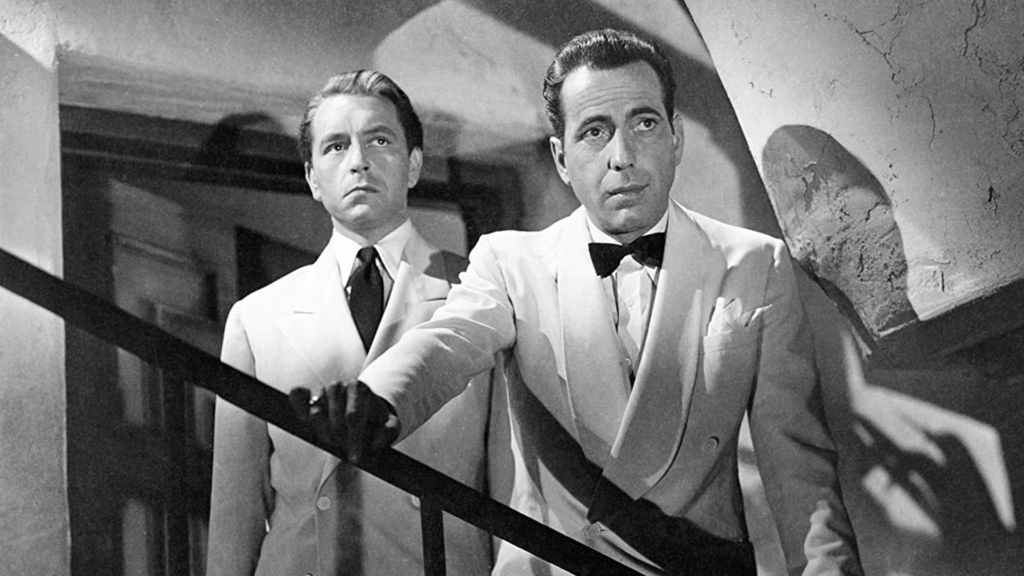
Americans are presented as being somewhat above the foreigners in the film as they are not necessarily stuck in Casablanca as some of them already have an American passport and Visa. The main example of this is Rick and his embodiment of the Americans in WW2, his transformation throughout the film, from an isolationist to a patriot was the main representative of America and their morals during the WW. The film showcases Americans as having the power to influence certain events but also as reluctant participants in global struggles, stuck between personal pleasures and their call of duty.

Europeans
Europeans are represented as being both victims and collaborators with the Nazi’s ruling, often representing a range of moral complexities and survival instincts in the case of wartime oppression. Though Ilsa’s character embodies an European woman who has been forced to move from country to country along with her husband Victor who is depicted as a hero as he was part of the resistance, they are represented as positive European characters. This however contrasts characters such as Major Strasser who even though he is European, he is correlated with the Nazi as he was one of the German officers who was taking over France therefore creating two opposite representations of the Europeans in the film.
political and social context
World War 2 started in 1939 and ended in 1945. There were two main groups fighting against each other to acquire land during the war, these were: Allies – Great Britain, Russia (USSR), USA and Axis – Germany, Italy, Japan
During the war, France was on the Allies’ side fighting against the Axis however very early in the war, France got defeated and they surrendered. However, there were French soldiers and generals (Allies) which wanted to keep fighting against the Germans, these were known as the 3 French.
Free France – Vichy France was the central and southern part of France where “unoccupied” France was still controlled by the German government. Casablanca is also in Morocco which was also a part of French territory at the time therefore, Vichy France controlled Morocco.
America was an isolationist country at the beginning of WW2 however, after the attack at Pearl Harbour a couple years after the war starter, America officially declared their inclusion in the war.
Operation Torch (November 8th 1942) – Torch was a compromise operation that met the British objective of securing victory in North Africa while allowing American armed forces the opportunity to begin their fight against Nazi Germany and Fascist Italy on a limited scale, arrival of the Allies.
world premier of Casablanca – It had its world premiere on November 26, 1942, in New York City and was released nationally in the United States on January 23, 1943. The film was a solid, if unspectacular, success in its initial run.
Casablanca Conference (January 14, 1943 – January 24, 1943) – the finalization of Allied strategic plans against the Axis powers in 1943, and the promulgation of the policy of “unconditional surrender.” (President Franklin Delano Roosevelt, Prime Minister Winston Churchill, the French generals Charles de Gaulle and Henri Giraud, and the CCS. Joseph Stalin, the Soviet premier).
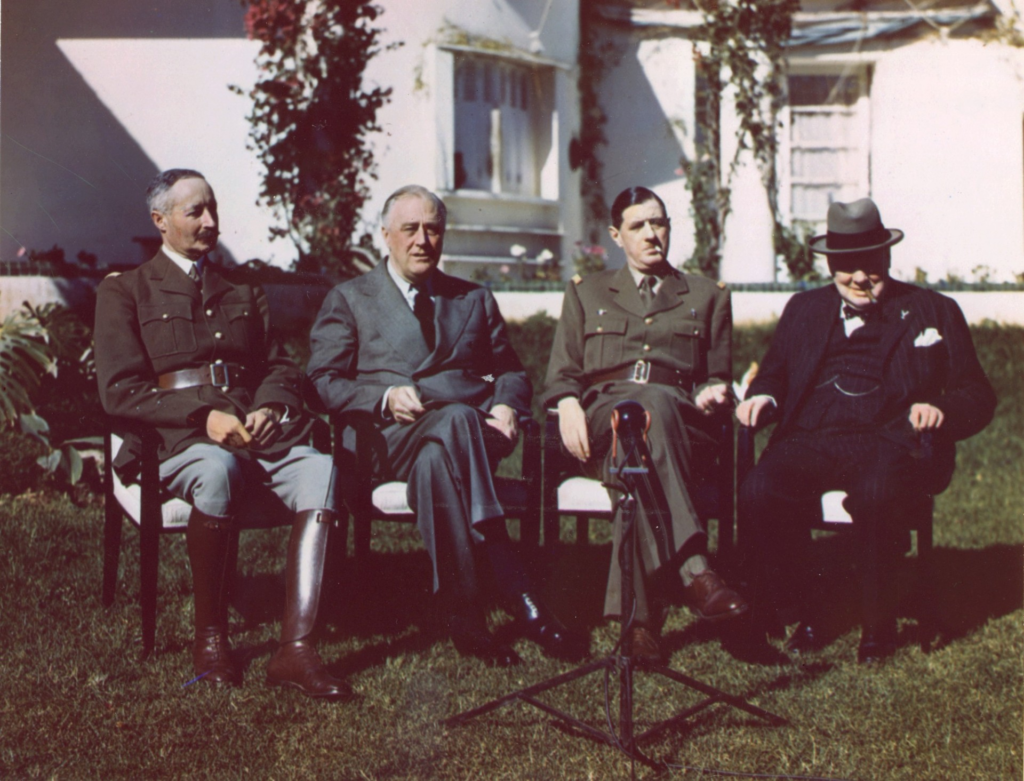
“It captured the zeitgeist” – the defining spirit or mood of a particular period of history as shown by the ideas and beliefs of the time. “the story captured the zeitgeist of the late 1960s”.
news about the war – In the cinemas they used to have short clips of what was then considered as the news where Americans would sit and watch what was happening in the world before watching the main film as well as listening to the radio and reading newspapers.